On a recent coastal walk here on the South Shore of Nova Scotia, we came across this interesting rock. It lies among other boulders and looks as if it has been here for a very long time. But has it, is it an ancient petroglyph or is it a modern carving, done by someone having a bit of fun?
The carved scene is complicated and looks like St George and the Dragon, or some sea serpent, with a knight and horse. So, who carved this horse on the stone? Or the knight who has just killed the dragon?
The Mi’kmaq recorded images of people, animals, hunting and fishing. With the arrival of the Europeans, they began to include images of sailing ships, men hunting with muskets, soldiers, Christian altars and churches, and small items like coins and jack-knives.
Can anyone solve this mystery for me? Is this a modern day carving or is it an ancient stone, with a meaning? There are many theories, but I’m sure there is a simple explanation.
At least this post has attracted a lot of interest and differing views.
Update – January 24th, 2017
In 2013, the Curator of Archaeology at the Nova Scotia Museum said it had been carved with a metal tool, so was probably done by a local artist.
Then the Director of Studies in History at Yale University said it was a clumsy copy of the Ramsund Carving.
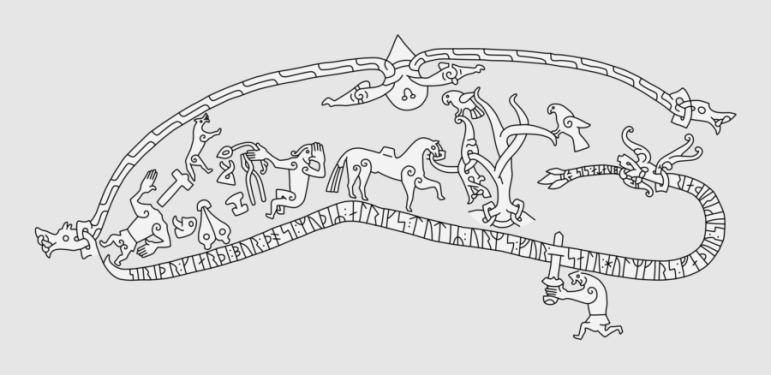
It really is very much a copy of this!
Three men were committed to creating this wonderful original which took them 7 days to complete.
The process used in creating this masterpiece is still a puzzle except that heat was used before the carving was carried out. No chisels were used.
At the period of carving the stone was further inland. However, due to environmental changes, erosion of the coast, the stone was finally situated on the beach. Much of the erosion was caused by ice pushing up against the cliffs in winter periods during the small ice age which finally ended in the late 1800s.
The stone is currently buried to a depth beneath the beach of nearly 3 metres. In other words there is more stone beneath the beach than above it.
There are 6 ley lines ( earth energy lines) crossing the centre of the stone. All are positive- some male others female.]
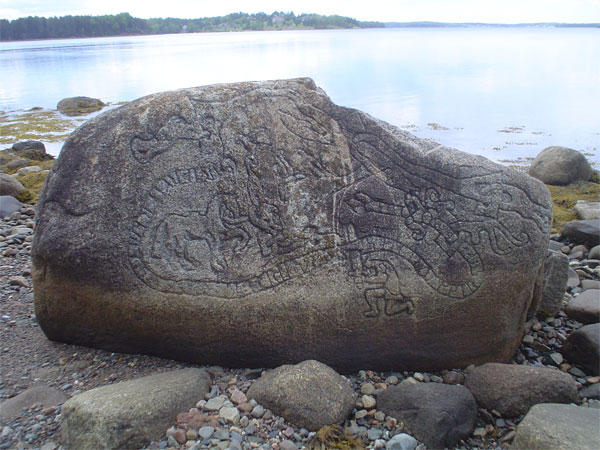
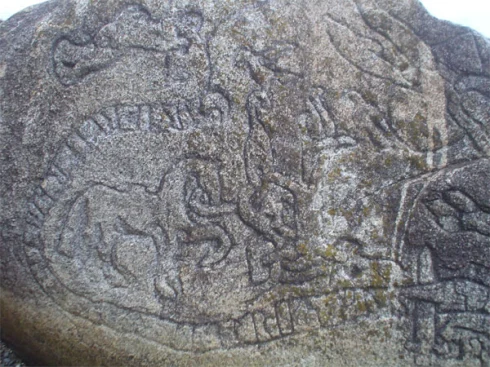
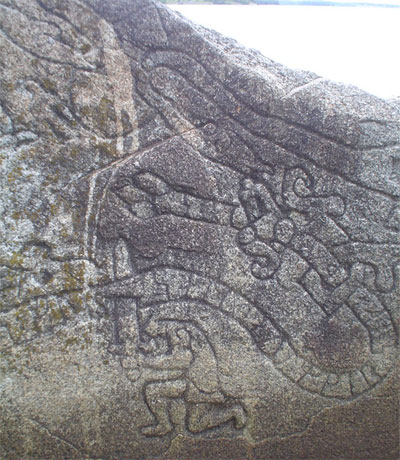
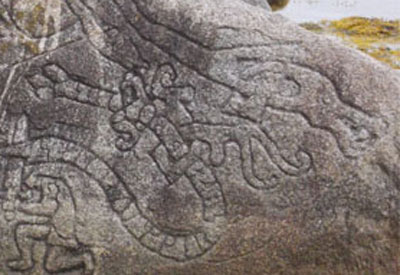

Recent Comments